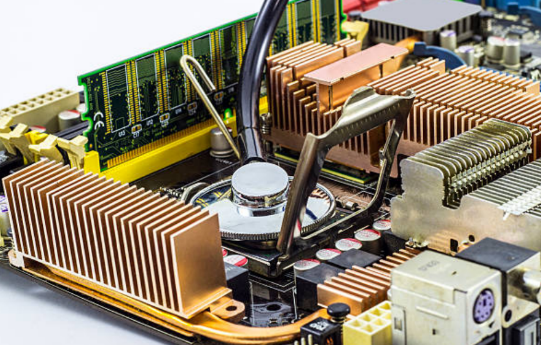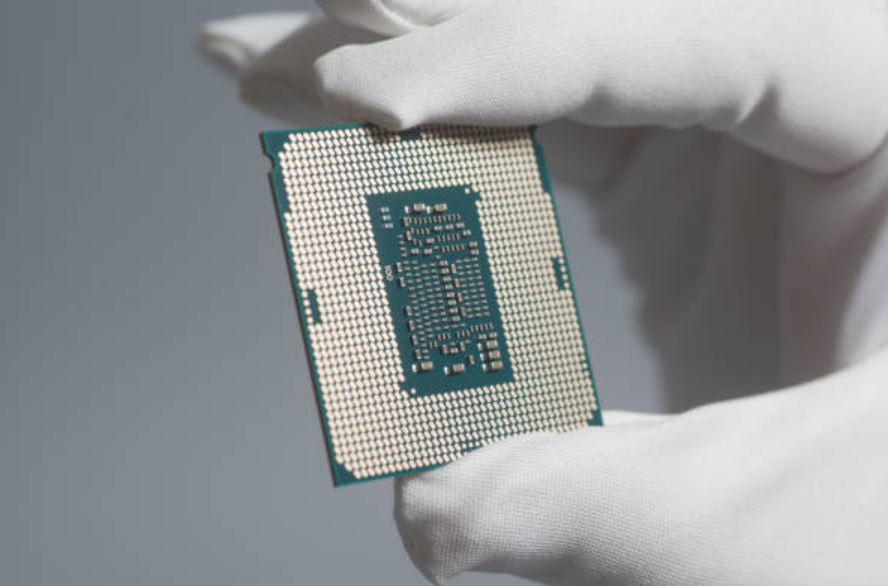In an electric circuit (distributed constant circuit) that introduces the concept of distance, the ratio of voltage to current or the ratio of electric field to magnetic field is called "characteristic impedance", and the unit is Ω.
Impedance control is the process of adjusting the ohms of a specific line as specified by the customer.
When connecting the input and output from one electric circuit to the next, in principle, it is necessary to match the impedance of each. Connecting with a coaxial cable (structure like a TV antenna) is the most stable, but the impedance control board reproduces this on a printed circuit board.
We aim to deliver as quickly as possible, even for substrates that support high frequencies.
In recent years, the number of printed circuit boards compatible with high frequencies has increased significantly. The higher the frequency, the greater the transmission loss, so low dielectric constant materials are used to reduce transmission loss as a countermeasure.
At VICTORY PCB, we are expert in manufacturing impendence control pcb. Normally, it takes about a month to order materials, but we are trying to shorten the delivery time by always having them in stock. In addition, it is possible to order other materials requested by the customer.
The ratio of voltage to current and the ratio of electric field to magnetic field are adjusted by changing the following elements.
It is the most modifiable element. For a single line, increasing the line width will lower the impedance value, and decreasing the line width will increase the impedance value.

In the case of differential lines, increasing the line width and decreasing the line spacing will lower the impedance value, while decreasing the line width and increasing the line spacing will increase the impedance value.
Increasing the copper foil thickness will lower the impedance value, and decreasing the copper foil thickness will increase the impedance value.
For microstripline and stripline, the signal line layer and reference layer are separate. In other words, the interlayer distance corresponds to the reference distance.
As the distance from the reference increases, the impedance value increases, and as the distance decreases, the impedance value decreases.
It is the specific dielectric constant of the material. A higher dielectric constant results in a lower impedance value, and a lower dielectric constant results in a higher impedance value.
In the case of microstrip lines, the effect is not great, but a thicker resist will result in a lower impedance value, and a thinner resist will result in a higher impedance value.
Factors affecting characteristic impedance in printed circuit boards
There are various mechanisms and structures, but when creating a printed circuit board, the elements that affect the impedance are fixed. Basically, we receive data from the customer, and we receive materials on what Ω they want to control for a specific line. The impedance control board is to change the elements described below and adjust according to the customer's request.
These are the easiest elements to change.
For a single line, increasing the line width will lower the impedance value, and decreasing the line width will increase the impedance value.
For differential lines, widening the line width and narrowing the line spacing will lower the impedance value, while narrowing the line width and increasing the spacing will increase the impedance value.

Increasing the thickness of the copper foil decreases the impedance value, and decreasing the thickness of the copper foil increases the impedance value.
For microstripline and stripline, the signal line layer and the reference layer are separate. In other words, the interlayer distance corresponds to the reference distance.
As the distance from the reference increases, the impedance value increases, and as the distance decreases, the impedance value decreases.
In the case of a flexible board, the distance from the reference is smaller than that of a normal rigid board, so the impedance value is inevitably low.
To meet the customer's needs, the line width must be reduced in order to increase the impedance value.
Then, depending on the case, the line width must be finished with about 50μ, which makes manufacturing difficult.
In that case, we may apply a coplanar structure where the reference is on the same layer as the signal line.
It is the relative permittivity peculiar to the material. Basically, the material is specified by the customer, so there is no way to change it.
A higher dielectric constant results in a lower impedance value, and a lower dielectric constant results in a higher impedance value.
For microstrip lines, the resist thickness also affects the impedance value. A thicker resist will result in a lower impedance value, and a thinner resist will result in a higher impedance value.
There is software that automatically calculates the impedance value when manufacturing a board with that structure by inputting the elements that affect the impedance mentioned above. Conversely, by entering the impedance value, you can also calculate the line width and line spacing.
As a result, the layer configuration, line width, and line spacing can be determined before the board is created, so the chances that the impedance value deviates from the expected impedance value after actually making the board has been greatly reduced.
Depending on the customer, we have to measure the impedance and guarantee the numerical value.
Due to the shape of the probe of the measuring instrument, it is not possible to directly measure the lines inside the board. . First, measure the 50Ω standard plate and make fine adjustments. After adjustment, measuring a test coupon and comparing it to 50Ω gives an accurate impedance value.
The most common impedance values are 45Ω, 50Ω, and 75Ω for single, and 90Ω, 100Ω, and 120Ω for differential.
In addition to the above, notes on impedance control of the printed circuit board are described. If impedance measurements are required, test coupons are required.
The standard size of the test coupon is 10mm x 75mm, so we have to place test coupons for the number of types of specifications that require impedance control. Therefore, it is necessary to think about imposition with some leeway.
In the case of high frequencies, the explanation so far basically assumes no loss.
Strictly speaking, transmission loss must be considered in the case of impedance control (although this is fine in most cases).
The higher the frequency of the circuit, the greater the transmission loss, which may differ from the target impedance value.
Unfortunately, the software we currently have cannot handle simulations that take transmission loss into consideration.
The classification of printed circuit boards takes into account the technology of their manufacture. Three main methods are used:
· subtractive - in order to obtain a conductive pattern, unnecessary sections of the conductive layer (foil) on the surface of the base are removed by etching;
· additive - conductive material is selectively deposited on a non-foil base;
· semi-additive - a thin layer of coating is preliminarily applied to the base, which is subsequently removed from the gaps.
Additive methods according to the principle of creating a conductive coating are divided into chemical and chemical-galvanic.
· meshography;
· photo printing (negative or positive);
· offset printing.
Other subtleties of the technological process of manufacturing printed circuit boards are also taken into account.
If a customer asks about simulation of transmission loss, we cannot respond in-house. However, if it is not frequent, you can ask Polar Instruments to perform S-mulation.
In that case, information on the dielectric loss tangent of the material, the length of the control line, and the frequency of the AC circuit are required as influencing factors.
By continuing to use the site you agree to our privacy policy Terms and Conditions.
Recruit global agents and distributors Join us